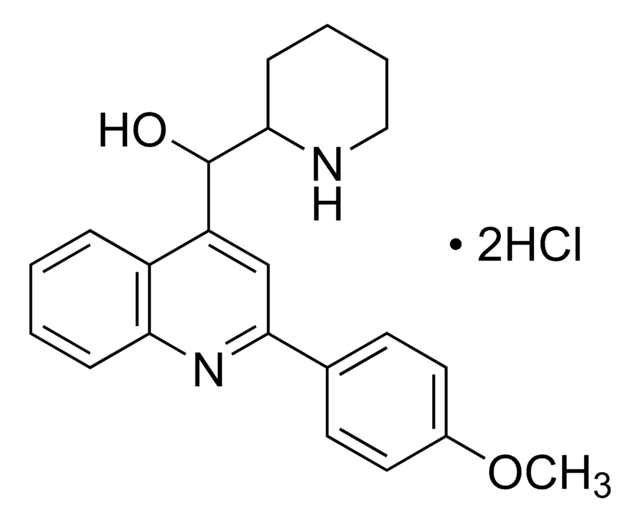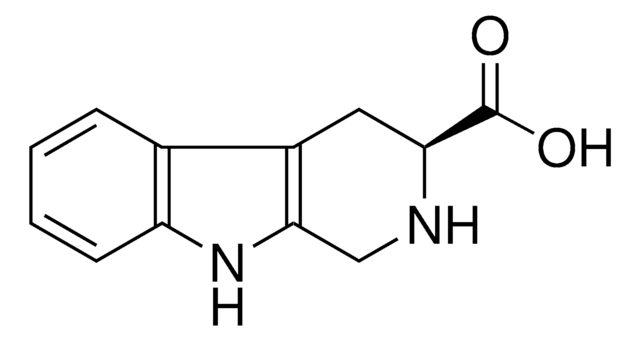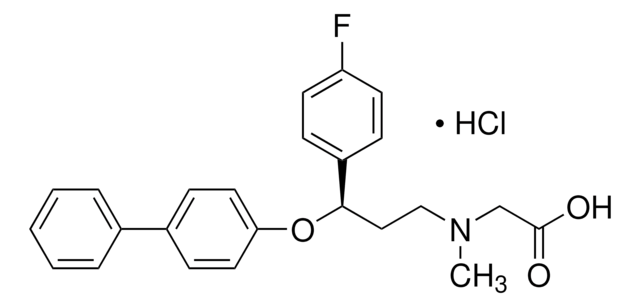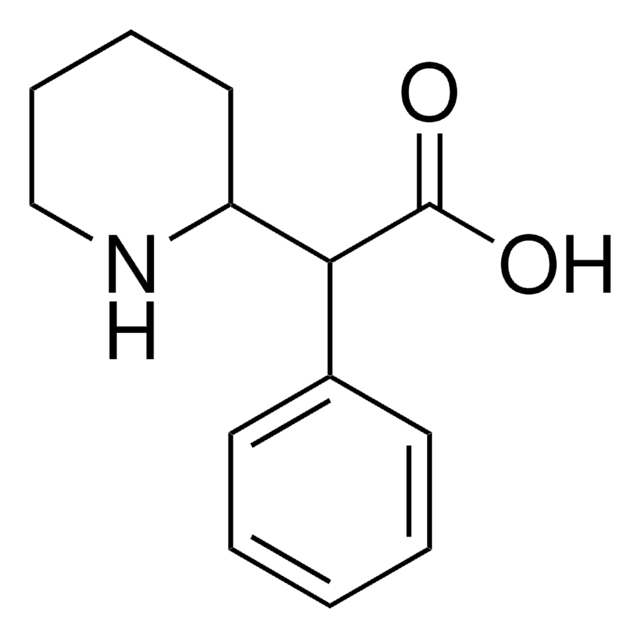Kluczowe dokumenty
SML2160
R-568 hydrochloride
≥95% (HPLC)
Synonim(y):
2-chloro-N-[(1R)-1-(3-methoxyphenyl)ethyl]-benzenepropanamine hydrochloride (1:1), KRN 568 hydrochloride, NPS-R 568 hydrochloride, Norcalcin hydrochloride, R 568 hydrochloride, Tecalcet hydrochloride
About This Item
Polecane produkty
Próba
≥95% (HPLC)
Formularz
powder
aktywność optyczna
[α]/D +35 to +40°, c = 0.5 in chloroform-d
warunki przechowywania
desiccated
kolor
white to beige
rozpuszczalność
DMSO: 2 mg/mL, clear (warmed)
temp. przechowywania
2-8°C
ciąg SMILES
C[C@@H](NCCCC1=C(C=CC=C1)Cl)C2=CC=CC(OC)=C2.Cl
InChI
1S/C18H22ClNO.ClH/c1-14(16-8-5-10-17(13-16)21-2)20-12-6-9-15-7-3-4-11-18(15)19;/h3-5,7-8,10-11,13-14,20H,6,9,12H2,1-2H3;1H/t14-;/m1./s1
Klucz InChI
YJXUXANREVNZLH-PFEQFJNWSA-N
Działania biochem./fizjol.
Kod klasy składowania
11 - Combustible Solids
Klasa zagrożenia wodnego (WGK)
WGK 3
Temperatura zapłonu (°F)
Not applicable
Temperatura zapłonu (°C)
Not applicable
Wybierz jedną z najnowszych wersji:
Certyfikaty analizy (CoA)
It looks like we've run into a problem, but you can still download Certificates of Analysis from our Dokumenty section.
Proszę o kontakt, jeśli potrzebna jest pomoc Obsługa Klienta
Masz już ten produkt?
Dokumenty związane z niedawno zakupionymi produktami zostały zamieszczone w Bibliotece dokumentów.
Nasz zespół naukowców ma doświadczenie we wszystkich obszarach badań, w tym w naukach przyrodniczych, materiałoznawstwie, syntezie chemicznej, chromatografii, analityce i wielu innych dziedzinach.
Skontaktuj się z zespołem ds. pomocy technicznej








